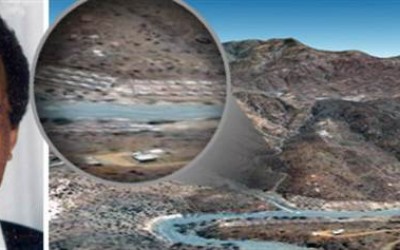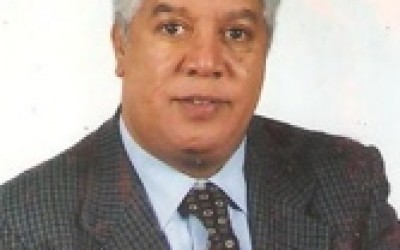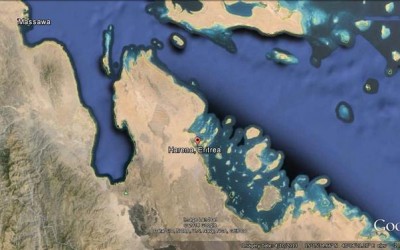United Nations’ report indicated that Eritrea continued propping up Tigrai People’s Democratic Movement (TPDM) in violation of Security Council resolution 1907 (2009).
The latest report of the UN Monitoring Group on Somalia and Eritrea, released last week, depicts TPDM (a.k.a. “Demhit”) as the strongest among Eritrea-based Ethiopian rebel groups with around 20,000 fighters.
The UN monitors learnt from multiple sources that “weapons in the logistics department of Eritrea Defence Forces (EDF) are being systematically transferred to TPDM. The report added:
“A reliable former senior Eritrean military source told the Group that he was informed by his former colleagues that the following weapons had been transferred from EDF to the TPDM in autumn 2013, most likely during the month of September: sniper rifles, Walther PP semi-automatic pistols, Doshkas, Tokarev T pistols, and binoculars”.
TPDM (a.k.a. “Demhit”) was founded in 2001, immediately after the end of the Ethio-Eritrea border war, when Asmara’s decided to continue the war by proxy. Its members are drawn from the northern region, Tigrai. While Ethiopian officials often claim TPDM is mostly consisted of fugitives and mercenaries, the report describes them as “dissidents from Tigray People’s Liberation Front (TPLF)” – the regional wing of the Ethiopian ruling part.
Yet, multiple sources interviewed by the monitoring group indicated that:
* “TPDM had participated in an armed crackdown on internal dissent inside Eritrea at the end of 2013″.
* TPDM had “a dual function as an Ethiopian armed opposition group and a protector of the [President Isaias] Afwerki regime”.
* TPDM fighters “are seen to be personally loyal to [the President], unlike the defence forces whose loyalties have been questioned by the President in recent years.”
* “Eritrea’s support to TPDM appears to be more sustained and organized than its support for other Ethiopian armed groups”.
Nonetheless, Eritrean officials denied providing arms to TPDM without providing detailed information and claimed that “Ethiopian armed groups were a creation of Ethiopia’s internal dynamics”.
According to the report, the overall supervision of Ethiopian armed groups(other than ONLF) is under Eritrean Colonel Fitsum Yishak (a.k.a. “Lenin”), while Colonel Tesfaldet Habteselasie (in the President’s Office) is in charge of all foreign armed groups.
TPDM’s vaguely worded political program states it aim “to establish a popular democratic government of Ethiopia where the rights of nation and nationality are respected and narrow nationalism is abolished”, arguing that “[the current system] being organized narrowly based on clan and family orientations… It is striving to exercise a divided and rule policy to create chaos and disintegration in the name of self-determination.”
Read the section of the report on TPDM
——-
Tigray People’s Democratic Movement
70. The Monitoring Group received multiple corroborating testimonies that Eritrea continues to support the Tigray People’s Democratic Movement (TPDM), in violation of paragraph 15 (b) of resolution 1907 (2009).
71. TPDM, also known by its Tigrinya acronym “Demhit”, is an armed Ethiopian opposition group founded in 2001 by dissidents from Tigray People’s Liberation Front (TPLF) of Ethiopia. TPDM says its aim is “to establish a popular democratic government of Ethiopia where the rights of nation and nationality are respected”.[i]
72. The Monitoring Group has previously reported on Eritrea’s support for TPDM (S/2012/545). In 2012, the Group found that TPDM was being trained in Harena, a Red Sea island off the eastern coast of Eritrea, as well as in smaller military training outposts close to the border between Ethiopia and Eritrea. The Monitoring Group obtained information that TPDM continues to be trained in Harena (see annex 7.1 for a map with the location of Harena).[ii]
73. TPDM regularly issues publicly available videos in which it affirms its commitment to taking up arms against the Government of Ethiopia.[iii] It is, however, difficult to verify information about military confrontations between TPDM and the Ethiopian army. A member of an NGO in contact with TPDM leaders told the Monitoring Group that he was informed of clashes in Benishangul, near the Amhara region of Ethiopia, in November of 2013.[iv] A former Eritrean general with active contacts inside the Eritrean military also told the Monitoring Group about an armed clash between the Ethiopian military and TPDM in the fall of 2013.[v] Moreover, the Monitoring Group received information that TPDM had participated in an armed crackdown on internal dissent inside Eritrea at the end of 2013.[vi]
74. Independent sources with relationships in the Eritrean military and with the Movement’s own leadership have told the Monitoring Group that TPDM had become the most important Ethiopian opposition group inside Eritrea and it had a dual function as an Ethiopian armed opposition group and a protector of the Afwerki regime.[vii] Its fighters, who are from the same ethnic group as President Afwerki, are seen to be personally loyal to him, unlike the defence forces whose loyalties have been questioned by the President in recent years.[viii] This is seen to be particularly relevant after the failed attempted “Forto” army mutiny confronting the Eritrean regime on 21 January 2013 (see S/2013/440).
75. The Monitoring Group estimates that there currently are tens of thousands of TPDM fighters.[ix] Two former senior Eritrean officials and a former Eritrean general, all of whom are in contact with officials in the military and Government, have told the Monitoring Group that Eritrea’s support to TPDM appears to be more
sustained and organized than its support for other Ethiopian armed groups.[x] A source with direct contacts within the leaderships of a number of armed groups described the TPDM as appearing to have “far more fighting capacity” than other Ethiopian groups.[xi]
76. The Monitoring Group also received information from two sources with active contacts inside EDF that weapons in the logistics department of EDF are being systematically transferred to TPDM.[xii] A reliable former senior Eritrean military source told the Group that he was informed by his former colleagues that the following weapons had been transferred from EDF to the TPDM in autumn 2013, most likely during the month of September: sniper rifles, Walther PP semi-automatic pistols, Doshkas, Tokarev T pistols, and binoculars.[xiii] The Monitoring Group has not been able to substantiate the information provided nor confirm whether the weapons given to TPDM came from old EDF stock or whether TPDM is being armed with weapons procured for the army after the adoption of resolution 1907 (2009).
77. In Cairo on 15 February 2014, the Monitoring Group raised the question of the source of the weapons used to arm TPDM with the Senior Political Adviser to the President of Eritrea, Mr. Gebreab. Mr. Gebreab told the Group that the Government of Eritrea does not support TPDM, which he said was interested in fighting the Government of Ethiopia. He further stated that in his view, there were no arms going to TPDM. The Monitoring Group requested additional information on TPDM in two letters dated 7 March 2014 ( see annex 1) and 1 August 2014 (see annex 3). During a videoconference on 28 July 2014, Ambassador Tesfay, did not answer the Monitoring Group’s questions about TPDM, and he said that Ethiopian armed groups were a creation of Ethiopia’s internal dynamics. He stressed that Eritrea was not engaged in any internal destabilization in Ethiopia.
———
Footnotes:
[i]. This is according to the TPDM website: http://demhitonline.blogspot.com.tr/p/aim.html.
[ii]. Former Ginbot Sebat fighters told the Monitoring Group that they saw TPDM being trained in Harena. Also, interview with a former Eritrean general with active contacts within the military establishment in November 2013 and August 2014; and interview with a former senior PFDJ official in March 2014.
[iii]. ATPDM video published on 2 June 2014 claims to show TPDM fighters graduating following a military and political course: http://tpdmtv.vidmy.com/video/93i663y9zcc0. A video published on 23 May 2013 purportedly showcases the ability of TPDM to attack Ethiopia’s ruling party, the Ethiopian People’s Revolutionary Democratic Front: www.youtube.com/watch?v=tuodBhoUZQ0.
[iv]. Skype interview with a member of an NGO in contact with TPDM leadership figures in July 2014.
[v]. Interview with a former Eritrean general with active contacts within the military establishment in November 2013.
[vi]. Interviews with a former senior Eritrean official in December 2013 and a former Eritrean general with active contacts within the military in November 2013. The incident was also reported in the press; see http://hornaffairs.com/en/2013/12/16/eritrea-unraveling-isaias-afeworki-authored-identity/ http://awate.com/a-mercenary-army-isaias-afwerkis-last-stand/.
[vii]. Interviews with a former PFDJ official in March 2014; a former Eritrean general with active contacts within the military establishment in November 2013; a former senior Eritrean official in December 2013; and Skype interviews with a member of an NGO in contact with TPDM leadership in July 2014 and August 2014.
[viii]. This development was described to the Monitoring Group by a former senior Eritrean official in December 2013, a former PFDJ official in March 2014, a former Eritrean general with active contacts within the military establishment in November 2013, and an Eritrean source advising the president of Djibouti with close contacts in the Sudan and Ethiopia in January 2014.
[ix]. This is based on figures obtained from a former high-ranking Eritrean official in November 2013 and August 2014, and a former senior PFDJ official in March 2014, both of whom estimated that there are currently around 20,000 TPDM fighters. Moreover, a European-based human rights activist who is in close contact with Eritrean refugees also told the Monitoring Group in April 2014 that she had been informed by newly arrived refugees that there were “tens of thousands” of TPDM fighters in Eritrea.
[x]. Interviews with a former senior Eritrean official in December 2013, a former PFDJ official in March 2014, a former Eritrean general with active contacts within the military establishment in November 2013 and August 2014.
[xi]. Skype interviews with a member of an NGO in contact with leaders of Ethiopian armed groups in July 2014 and August 2014.
[xii]. Interviews with a former senior Eritrean official in March 2014; and a former Eritrean general with active contacts within the military establishment in August 2014.
[xiii]. Interview with a former Eritrean general with active contacts within the military establishment in November 2013.
 The Swedish government has all the opportunity to follow the Canadian example and declare that Sweden intends to expel the Eritrean ambassador unless tax collection ceases with immediate effect. My question to the Foreign Minister Margot Wallstrom (S) is: do you want to be involved and give Dawit Isaak, one of the best birthday gifts he can get from us in Sweden?
The Swedish government has all the opportunity to follow the Canadian example and declare that Sweden intends to expel the Eritrean ambassador unless tax collection ceases with immediate effect. My question to the Foreign Minister Margot Wallstrom (S) is: do you want to be involved and give Dawit Isaak, one of the best birthday gifts he can get from us in Sweden?








 For Freedom of Expression 2002 - 2016 - Contact us:
For Freedom of Expression 2002 - 2016 - Contact us: